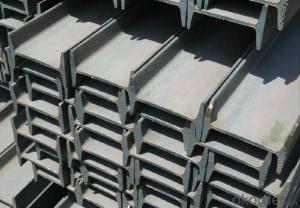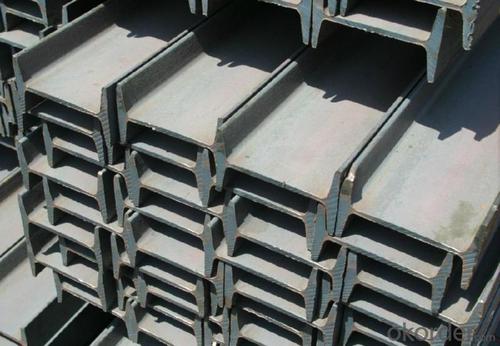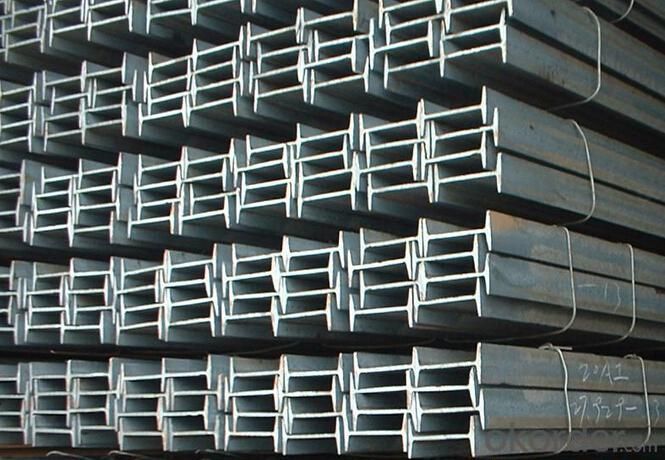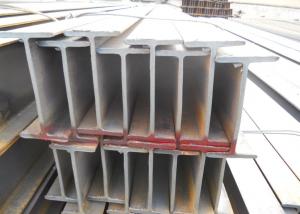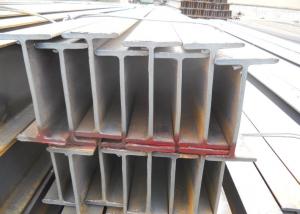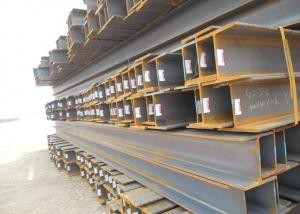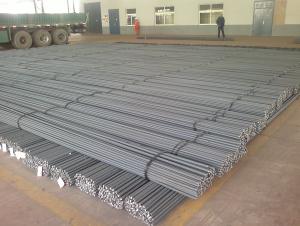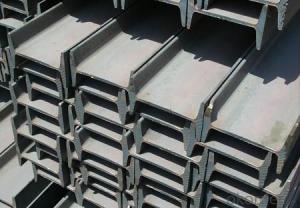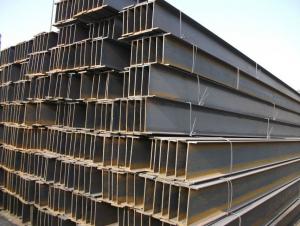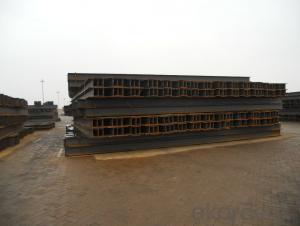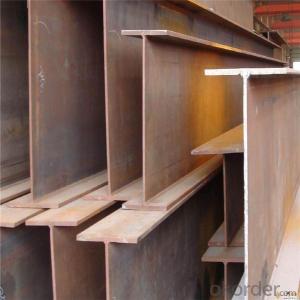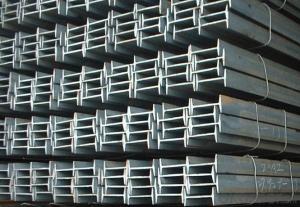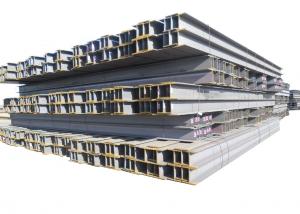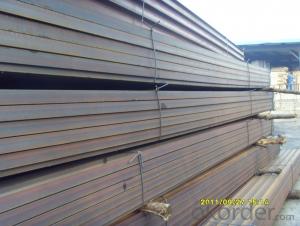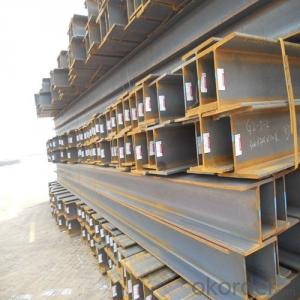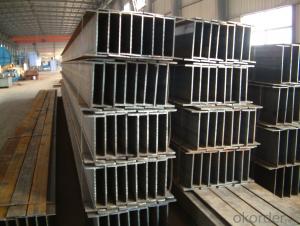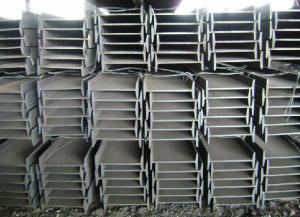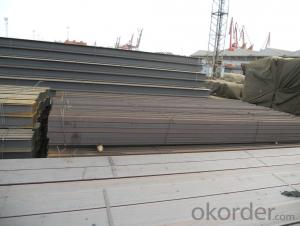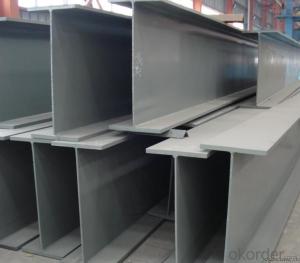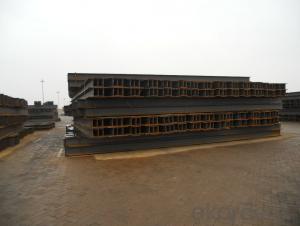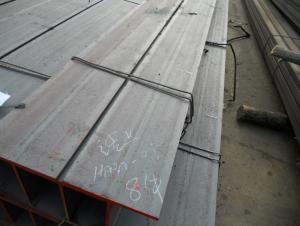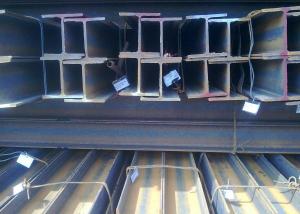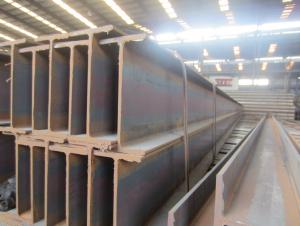Hot Rolled H-Beams Steel of Q235B IPEAA80 for Construction Steel
- Loading Port:
- China main port
- Payment Terms:
- TT OR LC
- Min Order Qty:
- 30 m.t.
- Supply Capability:
- 8000 m.t./month
OKorder Service Pledge
OKorder Financial Service
You Might Also Like
Hot Rolled Steel of Q235B IPEAA80 for Construction Steel I-Beams
Product Description:
OKorder is offering high quality Hot Rolled Steel I-Beams at great prices with worldwide shipping. Our supplier is a world-class manufacturer of steel, with our products utilized the world over. OKorder annually supplies products to European, North American and Asian markets. We provide quotations within 24 hours of receiving an inquiry and guarantee competitive prices.
Product Applications:
1. Supporting members, most commonly in the house raising industry to strengthen timber bears under houses. Transmission line towers, etc
2. Prefabricated structure
3. Medium scale bridges
4. It is widely used in various building structures and engineering structures such as roof beams, bridges, transmission towers, hoisting machinery and transport machinery, ships, industrial furnaces, reaction tower, container frame and warehouse etc.
Product Advantages:
OKorder's Steel I-Beams are durable, strong, and resist corrosion.
OKorder is offering high quality Hot Rolled Steel I-Beams at great prices with worldwide shipping. Our supplier is a world-class manufacturer of steel, with our products utilized the world over. OKorder annually supplies products to European, North American and Asian markets. We provide quotations within 24 hours of receiving an inquiry and guarantee competitive prices.
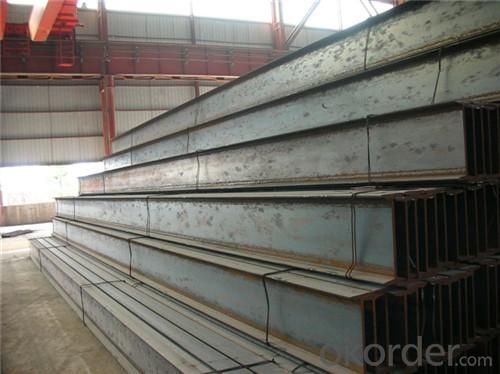
- Q: Can steel H-beams be used in utility infrastructure projects?
- Yes, steel H-beams can be used in utility infrastructure projects. Steel H-beams are commonly used in construction due to their strength and durability. They are particularly suitable for utility infrastructure projects because they can bear heavy loads and provide structural support. H-beams are often used in the construction of bridges, buildings, and other large structures, making them an ideal choice for utility infrastructure projects such as power plants, water treatment plants, and transmission towers. Additionally, steel H-beams are resistant to harsh weather conditions and can withstand natural disasters like earthquakes and hurricanes, making them a reliable choice for long-term utility infrastructure projects.
- Q: Can steel H-beams be used for temporary structures?
- Indeed, temporary structures can indeed employ steel H-beams. Due to their robustness and endurance, steel H-beams are frequently utilized in the realm of construction. With the capability to endure substantial loads and offer structural reinforcement, they are well-suited for temporary structures including scaffolding, temporary bridges, and event stages. The adaptability and simplicity of assembling steel H-beams render them an exemplary selection for swiftly constructing and dismantling temporary structures. Furthermore, the transportation and reuse of steel H-beams for various projects is effortlessly achievable, rendering them a financially viable choice for temporary structures.
- Q: Are steel H-beams resistant to termites or other pests?
- Yes, steel H-beams are resistant to termites and other pests.
- Q: Can steel H-beams be used in the construction of automotive showrooms or dealerships?
- Steel H-beams are indeed suitable for automotive showrooms or dealerships in construction. They are widely utilized in the field due to their robustness and longevity. These beams play a crucial role in providing structural support and framing purposes, such as supporting the roof and walls of buildings. In the context of automotive showrooms or dealerships, steel H-beams can be utilized to create spacious and unobstructed areas for displaying vehicles. Their strength also enables the construction of multi-story buildings, which can be advantageous for showrooms or dealerships requiring multiple levels for offices, storage, or additional display areas. Moreover, steel H-beams offer design flexibility and can be easily customized to meet specific architectural requirements and aesthetic preferences. They can be painted or coated to enhance their appearance and protect against corrosion. In conclusion, due to their strength, durability, and versatility, employing steel H-beams in the construction of automotive showrooms or dealerships is a prevalent and viable choice.
- Q: Hot rolled H section steel
- H steel is a new type of economical construction steel. H type steel cross section shape is reasonable in economy, good mechanical properties, rolling each point on the extended section is uniform, small internal stress, compared with the ordinary beam, a section modulus, light weight, saving advantages of metal, can make the building structure to reduce 30-40%; and because of its inner and outer legs parallel leg end is right, assembled into components, welding, riveting work can save up to 25%. Often used in large capacity requirements, large cross section stability, such as buildings, high-rise buildings, as well as bridges, ships, lifting transport machinery, equipment foundation, support, foundation piles.
- Q: Can steel H-beams be used in the construction of residential towers or skyscrapers?
- Steel H-beams, also known as I-beams, can be utilized in the construction of residential towers or skyscrapers. These structural steel beams, shaped like an "H," are widely employed in the construction industry due to their high strength-to-weight ratio, versatility, and cost-effectiveness. To withstand the forces and loads exerted on residential towers and skyscrapers, robust structural elements are required. Steel H-beams are exceptional in meeting these requirements. Their design allows for efficient weight and force distribution, making them ideal for supporting heavy loads over long spans. Additionally, their shape provides resistance against bending and twisting, enhancing the structural integrity of the building. The durability, longevity, and ease of installation of steel H-beams make them commonly used in the construction industry. They can be fabricated to precise specifications, ensuring a consistent and reliable structural system. Furthermore, they can be easily connected and assembled on-site, reducing construction time and costs. The utilization of steel H-beams in residential towers and skyscrapers allows for flexible designs and layouts. These beams can support various floor plans, open spaces, and architectural features. They also offer the possibility of creating large, column-free spaces, which is highly desired in modern building designs. Moreover, steel is a sustainable and environmentally friendly construction material. It is 100% recyclable and can be reused without losing its properties. This makes steel H-beams an attractive option for developers and architects who prioritize green building practices. In conclusion, steel H-beams are well-suited for the construction of residential towers or skyscrapers. Their strength, versatility, cost-effectiveness, and sustainability make them an excellent choice for supporting heavy loads and providing a reliable structural system in high-rise buildings.
- Q: How much is the weight of 200x200 H steel?
- 200*200 is the model, this model is divided into two specifications
- Q: Can steel H-beams be used for shopping centers?
- Yes, steel H-beams can be used for shopping centers. Steel H-beams are commonly used in commercial construction, including shopping centers, due to their strength, durability, and ability to support heavy loads.
- Q: Are there any regulations or standards for using steel H-beams in construction?
- Steel H-beams in construction are subject to regulations and standards, which differ depending on the country and region. These regulations ensure the safe and effective use of H-beams in building structures. In the United States, the American Institute of Steel Construction (AISC) is responsible for providing standards for steel construction, including H-beams. The AISC's Manual of Steel Construction outlines the criteria for design, fabrication, and safety considerations when using H-beams in construction. These standards cover topics such as material specifications, design principles, welding procedures, and quality control measures. Similarly, in Europe, the European Committee for Standardization (CEN) has developed the Eurocodes, which are a set of harmonized technical rules for the design of structures, including steel H-beams. The Eurocodes cover various aspects of construction, including structural design, material properties, and construction execution. The Eurocodes ensure that H-beams used in construction projects meet the necessary safety, performance, and durability standards. Different regulations and standards exist in other countries and regions for the use of steel H-beams in construction. These standards typically address issues such as material properties, structural design criteria, fabrication and construction practices, and quality control measures. Compliance with these regulations is crucial for contractors, engineers, and designers to ensure the structural integrity and safety of buildings that use steel H-beams. To ensure compliance with all applicable regulations and standards, it is important to consult the relevant local building codes and standards. Additionally, engaging the services of qualified professionals, such as structural engineers, during the design and construction stages is highly recommended.
- Q: How do steel H-beams compare to concrete beams in terms of cost and durability?
- Steel H-beams and concrete beams have distinct differences in terms of cost and durability. In terms of cost, steel H-beams are generally more affordable compared to concrete beams. Steel is a readily available material and the manufacturing process for H-beams is efficient, resulting in lower production costs. Additionally, steel H-beams can be fabricated off-site and delivered to the construction site, reducing labor costs and construction time. On the other hand, concrete beams require on-site casting, which can be a time-consuming process, and the materials involved in concrete beam construction can be more expensive. When it comes to durability, both steel H-beams and concrete beams have their strengths. Steel is known for its high tensile strength, allowing it to withstand heavy loads and resist bending or warping. This makes steel H-beams a popular choice for structures that require long spans or have large load-bearing requirements. Concrete, on the other hand, has excellent compressive strength, making it suitable for withstanding vertical loads. Concrete beams also have the advantage of being fire-resistant, which is an important consideration in certain applications. However, it is worth noting that steel is susceptible to corrosion if not properly protected. Without appropriate coatings or maintenance, steel H-beams can rust and deteriorate over time, reducing their durability. In contrast, concrete beams have a longer lifespan and are less prone to corrosion. Once properly cured, concrete beams can withstand environmental factors and have a longer service life compared to steel. In summary, steel H-beams offer cost advantages due to their affordability and ease of fabrication, while concrete beams are generally more durable with a longer lifespan. The choice between the two materials ultimately depends on the specific requirements of the project, including load capacities, span lengths, and environmental factors.
Send your message to us
Hot Rolled H-Beams Steel of Q235B IPEAA80 for Construction Steel
- Loading Port:
- China main port
- Payment Terms:
- TT OR LC
- Min Order Qty:
- 30 m.t.
- Supply Capability:
- 8000 m.t./month
OKorder Service Pledge
OKorder Financial Service
Similar products
Hot products
Hot Searches
Related keywords
